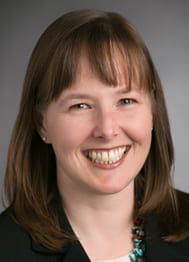Main Discipline(s):
Main Professional Societies:
Affiliation(s):
- Law
- Political Science
- American Political Science Association
- American Bar Association
- Wayne State University, Law School
- Wayne State University, Department of Political Science
- The University of Michigan, Department of Political Science, Ann Arbor, MI 2007 Ph.D.
- The University of Michigan Law School, Ann Arbor, MI 2003 J.D. cum laude
- Victoria University, Te Kawa a Maui, Wellington, New Zealand 1999 M.A. with Distinction in Maaori Studies
1998 B.A. Honours, First Class in Maaori Studies - The Johns Hopkins University, Baltimore, MD 1997 B.A. with Honors
My research focuses on legal advocacy and law reform, with particular attention to the various strategies used by Indian nations and indigenous groups to reform federal Indian law and policy effectively. I integrate traditional legal analysis with empirical social science methodologies for studying legal and political advocacy. I have developed several databases collecting information on lobbying and legislative advocacy by the 574 federally recognized tribal governments from 1975 to 2012.
American Indians and Alaska Natives are frequently overlooked in research in various STEM fields. I wanted to increase the visibility and elevate the voices of American Indian and Alaska Natives by researching how they have negotiated relationships with non-Indigenous governments over time. I was also tired of hearing my law colleagues make assumptions about the effectiveness of tribal advocacy and then use those assumptions to advise tribal governments and organizations. The effectiveness of advocacy is an empirical question that deserves more attention than mere speculation. We can and should base advocacy and policy decisions on facts.
More tribe-specific and comparative tribal research is needed due to the lack of research on tribal communities in general. I’d like to contribute to expanding knowledge about differences in political behavior by tribal governments at some point and build positive collaborative relationships with any tribal communities involved in the research.
Mary Golda Ross is one of my favorite role models. She was a citizen of the Cherokee Nation and the first female engineer at Lockheed. Her work, most of which was on classified projects, was of tremendous importance to the U.S. Space program and helped put Neil Armstrong on the moon. Cherokee values informed Mary’s life and work, including gaining skills in all areas of life (both within and outside the classroom), working cooperatively with others, showing humility, and helping ensure equal education and opportunity for all. I find her inspiring because she remained true to her Cherokee identity and culture while blazing new opportunities for women and people of color.
For more information on Mary Golda Ross, see https://airandspace.si.edu/stories/editorial/mary-g-ross-aerospace-engineer



